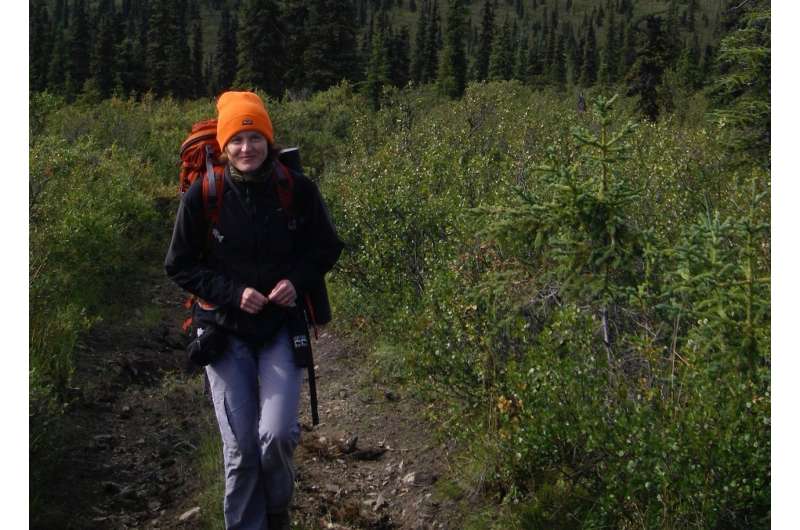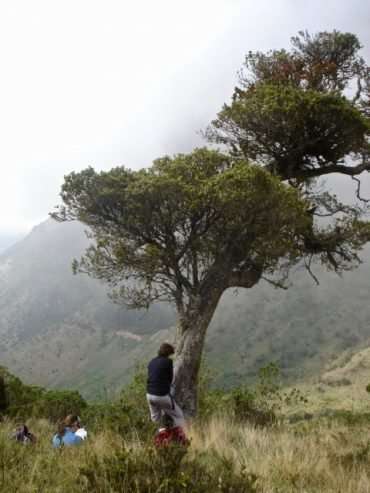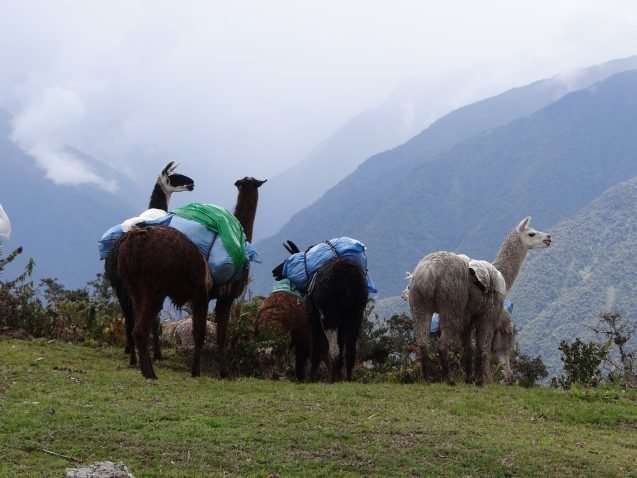Laia Andreu-Hayles explores tropical forests in a warming world

Laia Andreu-Hayles is a tree-ring scientist and Lamont Associate Research Professor at Lamont-Doherty Earth Observatory who uses the data contained in tree rings to reconstruct past climate conditions and study the interactions between forests and the environment. This work enables scientists to better understand current and future climate trends, the impact of global change on forests, and the Earth's climate system.
Andreu-Hayles received funding from the Center for Climate and Life to collect and develop tree-ring records for tropical forests in Bolivia and Peru. The project will provide much-needed observational climate data for the region and information about the climate sensitivity of tropical tree species. It will also improve insight into how highly vulnerable tropical ecosystems are changing, and how these changes may affect ecosystem services and water resources on local and global scales.
Q. What is the problem you're trying to solve?
A. Trees are affected by the environmental conditions. So, for instance, when we have a very dry year in the southwest of the U.S., a tree will have less growth. But in Alaska, summer temperatures will affect a tree: if it's a very cold summer then we'll see less growth. So the beauty of trees is that they're recording these variations in their environment. And by studying the changes in the width of the rings, we can study what climate was like in the past.
I proposed this project to the Center for Climate and Life because there are very few tree-ring chronologies for this region of central South America. There are also a lot of unknowns regarding the climate patterns there, and what happens in this region affects other parts of this planet. So for the field component of this project, we are focusing on two places. One is in Bolivia, in the Madidi National Park. That place was chosen because there's a lot of diversity of species at different altitudinal levels; the idea is to target three different altitudinal levels and try to find good species for tree-ring analyses there.

The other place is in Peru. We have good collaborators there and there's a lot to be explored, especially in southern Peru, where's there's higher seasonality than in northern Peru. Trees growing in places with marked seasonality are more inclined to produce an annual layer of growth—a tree ring—every year. This is important to get data with annual resolution perfectly dated to a calendar year. So I am optimistic that we'll find very old trees with the appropriate characteristics, those with visible tree ring layers and these tree rings also having annual resolution, to develop our research there.
Once I have data from these forests, they will be useful from the climatic point of view to better understand climate patterns over this region, but they will also be very useful because this part of the world has a very high diversity of tree species. Right now there are a lot of unknowns about how these species will respond to climate change. Through this project, I will be able to answer questions about how sensitive these species are to climate. And this information is important because it helps us understand things such as future carbon storage of these forests that it is relevant to the global carbon cycle and change in their transpiration, which is related to the global hydrological cycle. These forest responses to the changes in the environmental conditions also have impacts on climate, producing positive or negative feedback to global warming depending on the magnitude and sign of the change.
Q. What do you find most exciting about this type of work?
A. It's very exciting to have the opportunity to go to these remote places and analyze tree species no one has ever studied. And there are a lot of challenges. When going to these settings, you may have to walk for three days to reach the forests. But you are the first one doing the research, so that's something very special. And I think that because there are so many unknowns about the climate of this region and the highly diverse forests living there, we will get very good results from the project—everything we will learn will be new.
But what I really find most exciting about my work is that I'm always learning. I enjoy being part of multi-disciplinary scientific teams: I usually work with archaeologists, historians, physiologists, with experts in atmospheric science or remote sensing data. What is exciting about what I do is that I can provide a different, longer-term perspective than any of these people—and I learn a lot from what they provide. The result is a very rich way of doing comprehensive science.
Q. How might this work advance understanding of the challenges posed by climate change?

A. First, understanding forest sensitivity to climate will help us see how these forests will behave in the future under global warming, and help us understand the role of these forests in the global carbon and hydrological cycles, and so finally in the climate system. So this project will really help us learn more about some of the challenges posed by climate change.
In a more general sense, another aspect of the project is that we'll be getting long paleoclimate records for an area where we have very few high-resolution proxy climate data. These data will provide a long-term perspective of temperature and precipitation variations, hopefully for the last centuries, in the tropics allowing us to place the current anthropogenic changes in a historical context. Also, modelers can use these long-term records to test their models and see if they understand how the climate system is working, and also learn more about the uncertainty related to model projections.
Despite the unknowns about what we might find, we know it will be interesting and it's going to add a lot of information to what we know about trees in the tropics, so I'm grateful to receive funding from the Center for Climate and Life for this research.
Q. What gives you hope?
A. What gives me hope is seeing that there's more awareness of the relevance of climate among the general public. A lot of people are interested in the research that we are doing. They think it's important because they see how climate change can affect their lives, and the economy, and even the survival of people in all parts of the world. I think there's an increase in awareness of the significance of studying climate and I guess I'm pretty optimistic that if we explain what we are doing people will see that it's important.
Q. What's your favorite climate read?
A. I always recommend this book about tree rings and dendrochronology in general, An Introduction to Tree-ring Dating by Marvin A. Stokes. Because I love tree rings I usually like people interested in what I'm doing to read it.
Provided by State of the Planet
This story is republished courtesy of Earth Institute, Columbia University http://blogs.ei.columbia.edu.





















